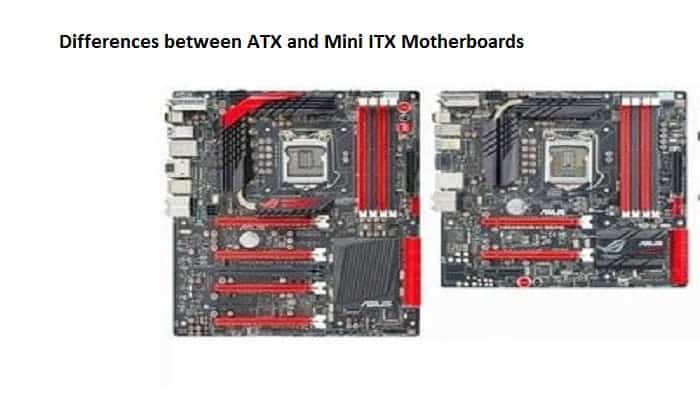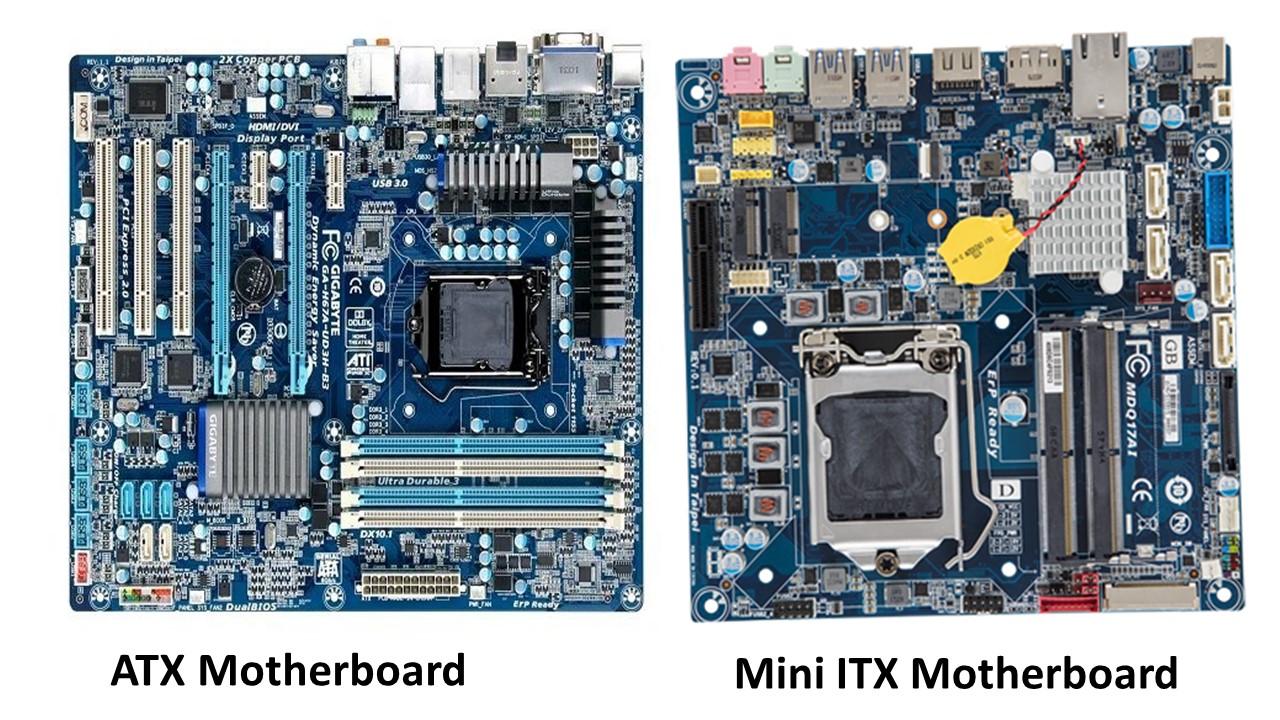The standard ATX and Mini ITX motherboards are two common types used in computers. Apart from the architectural design, size and price, there are some differences between them in terms of their compatibility, features, energy efficiency, RAM support, layout and more.
These differences mean that you will not get the same type of performance from both these motherboards, though the purpose of them is the same.
Therefore, it is essential that you know the differences between them to make a proper comparison and make the right choice.
In This Article
KEY TAKEAWAYS
- The size of the mini ITX boards is much smaller than the ATX boards and therefore are good to use in smaller devices.
- The ATX boards are cheaper in comparison to the mini ITX boards since these are used and sold extensively.
- The ATX boards come with as many as 7 PCI Express slots as opposed to the single such slot available in the mini ITX boards.
- The ATX boards being larger in size can hold up to 4 memory modules but the smaller mini ITX boards can hold only two of them.
7 Differences Between ATX and Mini ITX Motherboards

1. Differs in Size
The size is the most significant difference you will notice between ATX and mini ITX motherboards. The standard ATX motherboard comes in 305 by 244 mm size.
The mini ITX is the smallest and comes in 170 by 170 mm. This is therefore suitable to use in smaller cases. It will therefore not need a huge space to install and use.
2. The Price Variance
Price is an important factor to consider when you are building a new PC. However, it is not always true that a bigger form factor, like the standard ATX, will cost you more.
Since the standard ATX motherboards are used more commonly and are sold more, it is also cheaper than mini ITX motherboards.
The mini ITX motherboards are more compact but may also come with a higher price tag as compared to a standard ATX. It all depends on the individual components and the quality of it used in making the motherboard.
3. Layout variance
This is one of the most notable differences that you will find between mini ITX and standard ATX motherboards. The standard ATX is the best one to use due to the higher number of PCIe slots, 7 to be precise.
The mini ITX motherboard, on the other hand, will have only one PCIe slot and only one expansion slot. However, these slots are found on the edge and therefore will not allow using larger graphics cards.
4. Different RAM Capacity
The RAM or memory capacity is also different in the two types of motherboards. The standard ATX can hold up to four memory modules.
The mini ITX motherboard, being the smallest in size, can hold up to two memory modules only. This means that the memory capacity of a mini ITX motherboard is half the memory capacity of a standard ATX motherboard.
5. Availability
As for the availability of these two types of motherboards, the mini ITX motherboards are not readily and easily available. This means that you will have to search a lot for one that will match your needs and designs.
Meanwhile, the ATX form factor motherboards are more commonly used in mainstream computers. This makes it easily available in almost any computer store.
6. Compatibility
If you look at the compatibility of the two motherboards, the mini-ITX motherboards will normally work in combination with smaller components of a small form factor PC. These will have low configuration and specification.
The standard ATX motherboards will come with more RAM, PCIe, and SATA slots and can hold a lot of different components making it more compatible than the mini ITX boards.
7. Uses
The mini ITX motherboards are used in compact small form computers, that are even smaller than a standard laptop.
It includes using it in handheld computers, tablets, smartphones, home theater systems, digital video recorders and cable boxes.
The standard ATX motherboards, on the other hand, are used in larger computers that need to perform at a very high speed.
Which is Better – ATX or Mini-ITX Motherboards?

This is very subjective. Since both come with its significant pros and cons, you will need to consider them all to find the one that you should choose for your computing needs.
As for the standard ATX motherboard, the advantages are as follows:
- It is most upgradable
- It will support up to four memory slots
- It ensures better airflow
- It will be cooler and
- It will support up to 6 PCIe slots.
As for the downsides of a standard ATX motherboard, it includes:
- It is least portable being larger in size and
- It will not fit into anything less than a mid-tower case.
On the other hand, when you compare the pros and cons of a mini ITX motherboard, the merit list of it includes:
- It is most compact
- It is very portable and
- It is visually pleasing.
As for its demerits it is not very compatible and expandable. Also, all types of GPUs will not fit into a mini ITX motherboard and it will have a very poor overclocking performance.
All these differences suggest that, if you are building your first gaming computer or want to use it for video editing, you will be benefited if you use a standard ATX motherboard.
It is extremely beginner-friendly and will not generate a lot of heat.
Therefore, if you want a motherboard that is customizable, affordable, and use your system for high-end tasks, you should definitely go for a standard ATX motherboard.
On the other hand, if performance is not as vital a requirement to you as much as minimalist design and portability, then a mini ITX motherboard will be a much better option for you to choose.
The Final Thoughts
Therefore, all these indicate that both, a standard ATX and a mini ITX motherboard, are different from each other in different aspects, and reasons as well.
Both will work well according to its features and based on certain conditions, and fail in some.
Just figure out what you want it to do for you so that you choose the right form factor motherboard between the two to build your PC.